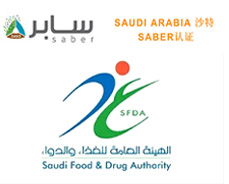News
With the rapid development of the global economy and the continuous growth of international trade, the European market has become an indispensable factor for many enterprises
Opportunities. However, entering the European market and selling products there is not an easy task. The European Union has developed a series of regulations and standards,
To ensure consumer safety and product quality. CE certification has become a necessary condition for the European market. In this article, we will delve deeper into
Explore the standard requirements and process steps for CE certification to help businesses better understand how to ensure product compliance with European regulations.
Firstly, let's understand what CE certification is. CE certification (short for Conformit é Europe é ene) refers to products
Complies with regulatory requirements and standards in the European market. Through CE certification, manufacturers can sell their products to the European market,
And ensure that its products meet European requirements, effectively reducing market access barriers.
The standard requirements and process steps for CE certification are as follows:
1. Determine applicable directives: The European Union has developed many directives related to different types of products. Manufacturers first need to determine the suitability
Applicable directives for its products and understanding of relevant standards and regulations.
2. Conduct product evaluation: According to applicable directives, manufacturers are required to conduct product evaluation. This can be achieved through self authentication or delegated authentication
Institutions conduct evaluations to complete. The purpose of evaluation is to ensure that the product complies with relevant standards and regulations, and meets consumer safety requirements.
3. Preparation of technical documents: Manufacturers need to prepare a detailed technical document to prove that their products comply with relevant standards and regulations.
Technical documents should include product specifications, design drawings, test reports, and other relevant information.
4. Conduct internal production control (IPQC): Manufacturers need to establish an internal production control (IPQC) system to ensure that products are in compliance with
Compliance with relevant regulations during the production process. This includes aspects such as raw material procurement, production process management, quality control, etc.
5. Conduct risk assessment: Manufacturers need to conduct a product risk assessment to determine potential risks that may exist during normal use of the product
Take corresponding measures to mitigate these risks.
6. Conduct laboratory testing: Manufacturers need to send their products to accredited laboratories for testing to ensure they meet relevant standards
And regulations. The testing may involve electromagnetic compatibility, mechanical properties, chemical content, and other aspects.
7. Preparation of declaration documents: Manufacturers are required to prepare a declaration document that meets CE certification requirements. The declaration document should include product information
Manufacturer information, applicable directives, standards and regulations, etc.
8. Marking with CE Mark: After all necessary steps and tests, manufacturers can mark their products with the CE mark. CE Mark
Indicates that the product meets European requirements and has passed CE certification.
Through the above process steps, CE certification ensures that products comply with relevant regulatory requirements before entering the European market. This helps to
Safeguard consumer rights and improve product quality and safety. For enterprises, CE certification is also a way to enter the European market
The threshold, through certification, can enhance consumer trust and recognition of the product.
HOT services
RELATED NEWS
-
+ Market demand for electrical certification SASO in Middle Eastern countries.
2024-03-06
-
+ The CE certification standards and process steps for European regulations.
2024-03-06
-
+ Application Guidelines for SASO Saudi Arabian Certification
2024-03-06
-
+ Preparation of ROHS certified environmental directive compliance documents - Material requirements:
2024-03-06
-
+ The EU General Product Safety Regulations have officially come into effect
2024-03-06
-
+ Recent significant regulatory updates from TEC and BIS in India
2024-03-06
-
 Tel
TelHotline
+86 400-826-3320
-
 WhatsApp
WhatsAppWhatsApp
+86-15355373320-penny
+86-13362995501-laura
-
Skype
-
 E-mail
E-mail -














